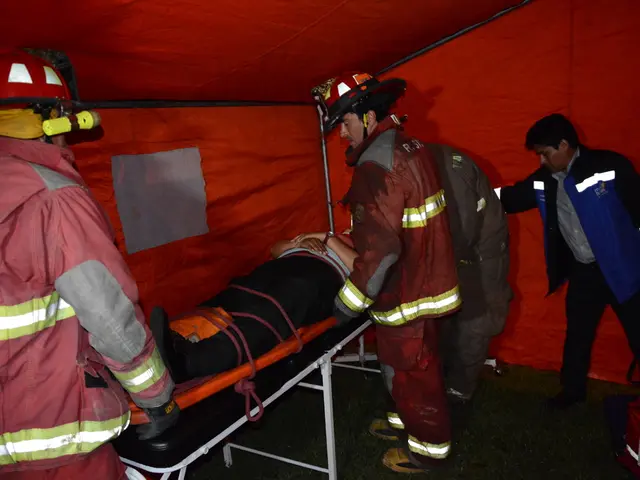Distinguishing age spots from skin cancer: Identifying the contrasts
Just the Facts: Spotting the Differences Between Age Spots and Skin Cancer
Age spots and skin cancer can share some physical characteristics, but there are significant differences to keep in mind. Knowing these differences is crucial for identifying potential skin concerns that may need medical attention.
Age Spots
- Visual Appearance: Age spots, or solar lentigines, often appear darker than the surrounding skin, mostly brown or black in hue[1][2][3].
- Texture: Age spots are typically smooth and non-itchy[1].
- Shape and Size: They may take on a round or oval shape and can vary in size, from a few millimeters to centimeters[1][5].
- Location: Commonly found on sun-exposed areas, such as the face, hands, shoulders, feet, arms, and back[1][3].
Skin Cancer
- Visual Appearance: Skin cancer can present differently depending on the type (e.g., basal cell carcinoma, squamous cell carcinoma, melanoma)[5].
- Basal Cell Carcinoma: Often appears as a pearly-like bump, usually red or pink in color[5].
- Squamous Cell Carcinoma: May cause red or dark, scaly areas[5].
- Melanoma: Frequently appears as a mole-like lesion but can sometimes be asymmetrical, show irregular borders, and display multiple colors, such as tan, dark brown, black, pink, red, and white[2][3].
- Texture: Might feel rough, itchy, or even bleed[5].
- Shape and Border: Melanoma can have an irregular shape and border[2][3].
- Location: Also found on sun-exposed areas, but can appear anywhere on the body[5].
Key Differences
- Symmetry and Borders: Melanoma usually features an asymmetrical shape and irregular borders, while age spots remain symmetrical and have well-defined borders[2][3].
- Color Variations: Skin cancers can display multiple colors, whereas age spots tend to maintain a uniform color[2].
- Texture and Elevation: Skin cancers may feel rough, scaly, or elevated, whereas age spots are generally smooth and level[1][3].
Take notice of any changes in existing lesions or new ones that appear, and consult a medical professional for a thorough examination if you have concerns about potential skin cancer[2]. If in doubt, it's better to seek professional advice!
- In the realm of dermatology, seniors may encounter both age spots and skin cancer as common skin conditions.
- While age spots are typically smooth, brown or black, and not itchy, some forms of skin cancer, such as melanoma, might display irregular borders, multiple colors, and a rough texture.
- Beyond melanoma, other skin cancers like basal cell carcinoma and squamous cell carcinoma can also show up on sun-exposed areas, similar to age spots, but with varying visual appearances and textures.
- Health-and-wellness enthusiasts should remember that science plays a crucial role in accurately identifying, diagnosing, and treating medical conditions like skin cancer.
- Pursuing a lifestyle focused on skin care and monitoring skin-conditions can help seniors differentiate between age spots and skin cancer, thereby promoting early detection and overall health.








